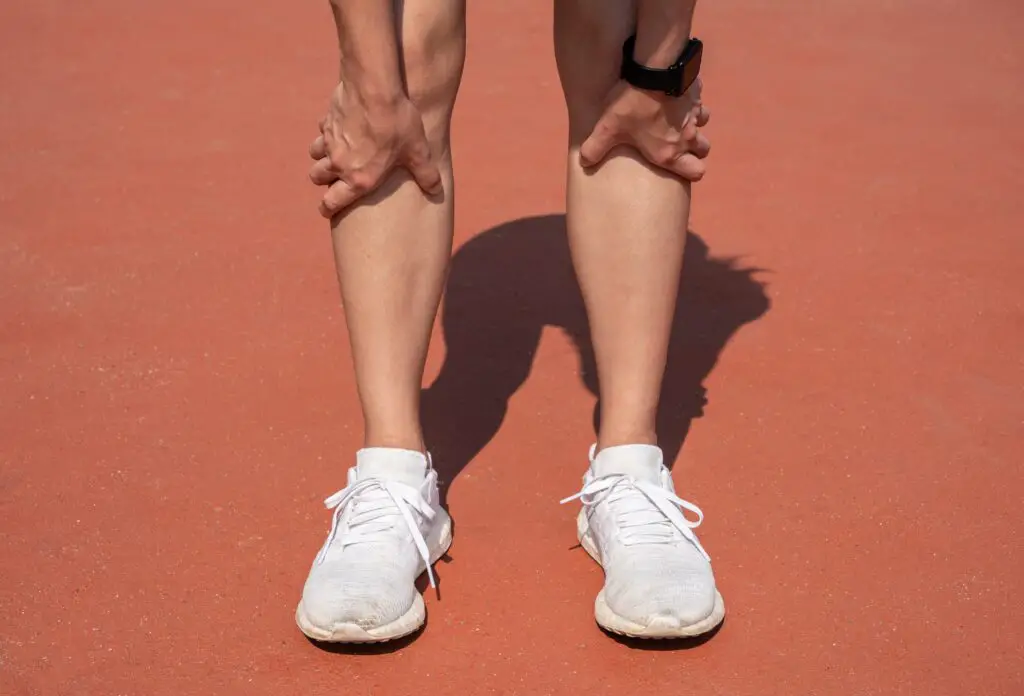Table of Contents
Facial pain or pressure can be frustrating and annoying at times. But the question is, what causes this pain? What causes sinus pressure?
In this article, we have answered these questions and so much more for you. You will also find home remedies to relieve this sensation of increased pressure and pain listed below.
Where are the sinuses in the face?

Sinuses of the face are also known as paranasal sinuses (1). Paranasal sinuses are hollow cavities in the bones of the face and skull, connected to the nose.
These hollow spaces inside the bones increase bone volume without increasing their weight or mass. The surfaces of these sinuses contain the same cells that line the respiratory tract (1).
There are four pairs of paranasal sinuses in total (2). The maxillary sinus is the biggest one, the other three are frontal, ethmoid, and sphenoid sinuses. These sinuses, located inside the cheekbone (maxilla) on each side of the face, have a pyramidal shape.
They drain inside the nose; the lateral wall of the nose forms the base of each sinus. The premolars and canine teeth are at the lower end of the sinus, while the roof of this sinus is formed by the orbit (floor of the eye socket) (2).
The ethmoidal sinuses are placed between both eye sockets (orbits) (2). They have a variable number of small cavities within the ethmoid bone, which is situated between the orbits, one on each side.
The sphenoid sinus is located at the back of the sphenoid bone, farthest from all other paranasal sinuses (1).
Frontal sinuses are placed inside the frontal, forehead bone in a triangular shape. There is one above each eye socket, separated from each other by a thin bone (1).
Functions of the sinuses
The important functions of the paranasal sinuses are (3):
- They add to the volume of bones without increasing the weight of facial and skull bones. In fact, they help reduce the weight of the skull by adding air pockets.
- They increase the resonance of the voice.
- They act as a cushion against facial trauma.
- They provide insulation to protect deeper nasal structures from temperature variations.
- They humidify the incoming air through mucus secretions.
Sinuses in the face are also known as paranasal sinuses. They are hollow cavities inside the facial bones. They include the maxillary sinuses inside the cheekbone, ethmoid sinuses between the eye sockets, sphenoid sinuses in the sphenoid bone, and frontal sinuses inside the forehead.
Their main functions are to add volume to the face and skull without increasing their weight, act as a cushion against facial trauma, and add resonance to the voice.
What causes sinus pressure and pain?
Pain and pressure in the sinuses can result from infections such as acute or chronic sinusitis, allergies, viral or bacterial infections, the common cold, or environmental pollutants (4).
These all cause inflammation (swelling) of the sinus lining, which results in pain and an increased mucus secretion. Another direct consequence is a pressure buildup inside the sinuses (4).

Acute sinusitis
The cavities of sinuses become swollen in acute sinusitis (5). When your sinuses are inflamed, excess mucus does not drain properly, which causes the feeling of pressure.
As a matter of fact, you may feel facial pain, difficulty breathing, nasal congestion, facial puffiness, and headache (5).
Acute sinusitis also causes thick green nasal discharge and postnasal drip, along with a change in sensation of smell (5). Other associated symptoms of acute sinusitis are (5, 6):
- Dull ache in your teeth
- Ear pain
- Cough
- Fever
- Fatigue
- Change in taste
Acute sinusitis can be caused by bacterial or viral infections (such as the common cold) (5). It usually resolves in less than four weeks (6).
Some of the risk factors for acute sinusitis are (5):
- Deviated nasal septum: Some people have the partition of their nose slightly more inclined towards one side than the other, which results in recurrent sinusitis.
- Nasal polyps: Some people may have benign growths inside the nose, which makes them more prone to sinusitis.
- Immune system dysfunction: Medical conditions causing a weak immune system can also result in recurrent sinusitis.
- Cystic fibrosis: A genetic disorder where mucus is thicker than usual leads to recurrent respiratory system infections, including sinuses.
Diagnosis
To diagnose sinusitis, your doctor will examine your face, nose, and throat (6). They may refer you to an ear, nose, and throat specialist. In rare cases, you may have imaging tests such as an X-ray or CT scan of the sinuses (6).
Treatment
The treatment options for acute sinusitis are (5):
- Nasal sprays that contain saline which can help drain mucus and relieve congestion
- Nasal steroid drops to reduce inflammation and swelling
- Decongestants that reduce mucus production
- Painkillers such as acetaminophen
- Antibiotics (if your doctor suspects your sinusitis is due to bacterial instead of viral infection)
Do not take any medicine beyond your doctor’s advice.
If sinusitis is not treated on time, a few complications can occur. One such infection affects the brain coverings and is known as meningitis (5). This infection may spread to the eyes, causing vision problems.

Chronic and subacute sinusitis
Sometimes, if acute sinusitis is not treated on time, it can result in subacute or chronic sinusitis (5). Subacute sinusitis lasts 4 to 12 weeks, while chronic sinusitis continues for over 12 weeks (6).
The symptoms of chronic sinusitis are almost the same as acute sinusitis, such as postnasal drip, nasal congestion, runny nose, bad breath, headache, tiredness, cough, and toothache (7). The main difference between different types of sinusitis is in their duration, as discussed above (6).
Some signs of chronic sinusitis point towards complications such as (7):
- Double vision
- Disorientation or confusion
- Swelling of the forehead or any prominent swelling on the face
- Neck rigidity
- High-grade fever, not resolving after medications
- Swelling or redness inside or around the eyes
Diagnosis
Your doctor will diagnose chronic sinusitis by taking a history and performing an exam (8). Nasal endoscopy allows visualization of the nasal passages and sinuses from the inside and helps detect the condition (8).
A CT scan and MRI can give detailed radiological pictures of sinuses, which are also helpful for diagnosing and determining the extent of damage. Your doctor may conduct allergy tests to see if hypersensitivity is the cause of your prolonged illness (8).
Treatment
Treating chronic and subacute sinusitis includes the same medications used to treat acute sinusitis but over an extended period (8). These medications are nasal (saline) sprays, an extended course of steroids, antibiotics, and allergy medications.
Immunotherapy can also be used for chronic sinusitis if the cause is hypersensitivity, that is allergies (8). If the cause is any of the structural deformities, such as nasal polyps, surgery can fix the root cause.
If chronic sinusitis does not change after medication therapy, your doctor may suggest surgical intervention. This surgery involves removing the infective focus and damaged tissue using an endoscope, a thin tube with a camera at one end (8).
Allergies
Allergies are the body’s reaction to foreign particles (9). These foreign particles are not harmful, your body is just hypersensitive to them. Such foreign particles are known as allergens.
Allergies are a common cause of sinus pressure or pain (10). The trigger agents stimulate mucus production and increase the swelling of the sinus lining. This results in facial pain, nasal congestion, runny nose, teary eyes, sneezing, and a feeling of increased pressure (10).
Molds, pet mites, dander, and seasonal allergens are the most common triggers of sinus pain.
Almost 50 million people in the United States experience at least one allergic reaction in a year (9).
Most of the time, if your biological parents have allergies, you are more prone to develop them. Allergies are not contagious and do not spread from person to person (9).
Diagnosis
They are diagnosed with various skin and blood tests, which help identify the particular trigger of an allergy (9).
Treatment
The most effective treatment option for allergies is to avoid the particular allergen that is your culprit (9). However, it is not always practical to completely avoid the trigger agent. In such cases, different anti-allergic medications can help.
Nasal sprays, oral anti-allergic medicines (antihistamines), asthma medications including oral tablets and inhalers, and immunotherapy can be treatment options depending on the severity of your allergic reactions (9).
Immunotherapy gradually exposes the body to allergens, reducing its hypersensitivity response (9).
Increased sinus pressure in the sinuses can result from infection such as acute sinusitis, which causes sinus lining and increased mucus production. If not treated on time, it can escalate into subacute and chronic sinusitis.
To diagnose sinusitis, your doctor will do an examination and may use an endoscope to look inside the nose and sinuses.
Apart from that, you may have radiological investigations, such as an X-ray or CT scan. Recurrent allergies to foreign particles also cause nasal and paranasal congestion.
Locations of sinus pain
Now that you know what causes sinus pressure and pain, let’s cover the location of sinus pain. Sinus pain usually occurs in the areas where the sinuses are located, which is discussed above. These points are (11, 12):
- Behind the eyes
- Forehead
- Bridge of nose
- Cheekbones
How to relieve sinus pain and congestion


Different ways to treat sinus pain and congestion are as follows (4):
- Nasal irrigation: Keep your sinuses moist if you have sinusitis or allergies causing sinus pressure. Use a bulb irrigator with saline or sterile water to wash out irritants and allergens, helping to drain the sinuses. Always use distilled or sterile water to avoid infection.
- Hydration: Make sure you have adequate fluid intake. It will help to ease your discomfort and heal faster.
- Steam inhalation: Steam inhalation can help open congested sinuses and loosen thick mucus. Boil water in a bowl and pour your head at arm’s length over it. Cover your head and the bowl with a towel and breathe deeply. Be cautious while handling the bowl. You can also use a humidifier or hot shower.
- Double pillow method: Sleep with two pillows to keep your head elevated. This will help you breathe, in case of nasal congestion.
- Pressure point massage: You can massage various pressure points. These are located on your forehead, above your eyebrows, your temples, on either side of your nose bridge, and in front of your ears.
When to see a doctor
Following are the signs that should be considered serious and make you run to your healthcare provider (4, 5):
- High-grade fever, such as 102 F or above
- If sinus pain and pressure are extended for more than ten days
- Severe headache not resolving after over-the-counter painkillers
- Vision changes
- Stiffness in neck
- Confusion or alteration in consciousness



How should I sleep when I have sinus congestion?
If you have nasal and paranasal congestion, you should sleep with your head elevated to ease breathing. You can put a few pillows under your head (4).
What is the difference between blocked sinus and allergic rhinitis?
Allergic rhinitis is the inflammation (swelling) of the nose that results from breathing foreign particles that you are allergic to (13).
If this nasal inflammation spreads to the sinuses, it can result in congestion and block the opening of sinuses inside the nose. Consequently, it will lead to the feeling of increased facial pressure (13).
Why do my cheeks hurt with sinus infections?
Sinusitis or sinus infection is an inflammation of the sinuses that causes increased mucus production and may block the sinuses (5). It can lead to increased facial pressure over the affected sinus. The maxillary sinus is located inside the cheeks, and if it gets infected, it can lead to pain in the cheek (5).
Can sinusitis come back after surgery?
Some patients may experience sinus disease even after surgery. This requires an extended course of antibiotics and steroids and may require an additional surgery (14).
Summary
Paranasal sinuses, including four pairs, are hollow spaces inside your facial bones. They add to the volume of facial bones without adding weight. They also act as a cushion against facial trauma.
If these sinuses get inflamed due to infection or allergies, it leads to increased facial pressure and pain. This inflammation can sometimes cause complications such as brain or eye infections.
Treatment includes antibiotics, steroids, painkillers, and sometimes surgery. Natural ways to relieve facial pain include nasal irrigation, adequate hydration, steam inhalation, and massage of pressure points.
If you have a high-grade fever, neck stiffness, changes in vision, or prolonged sinus pain, you should schedule an appointment with your healthcare provider.

















Comments
0